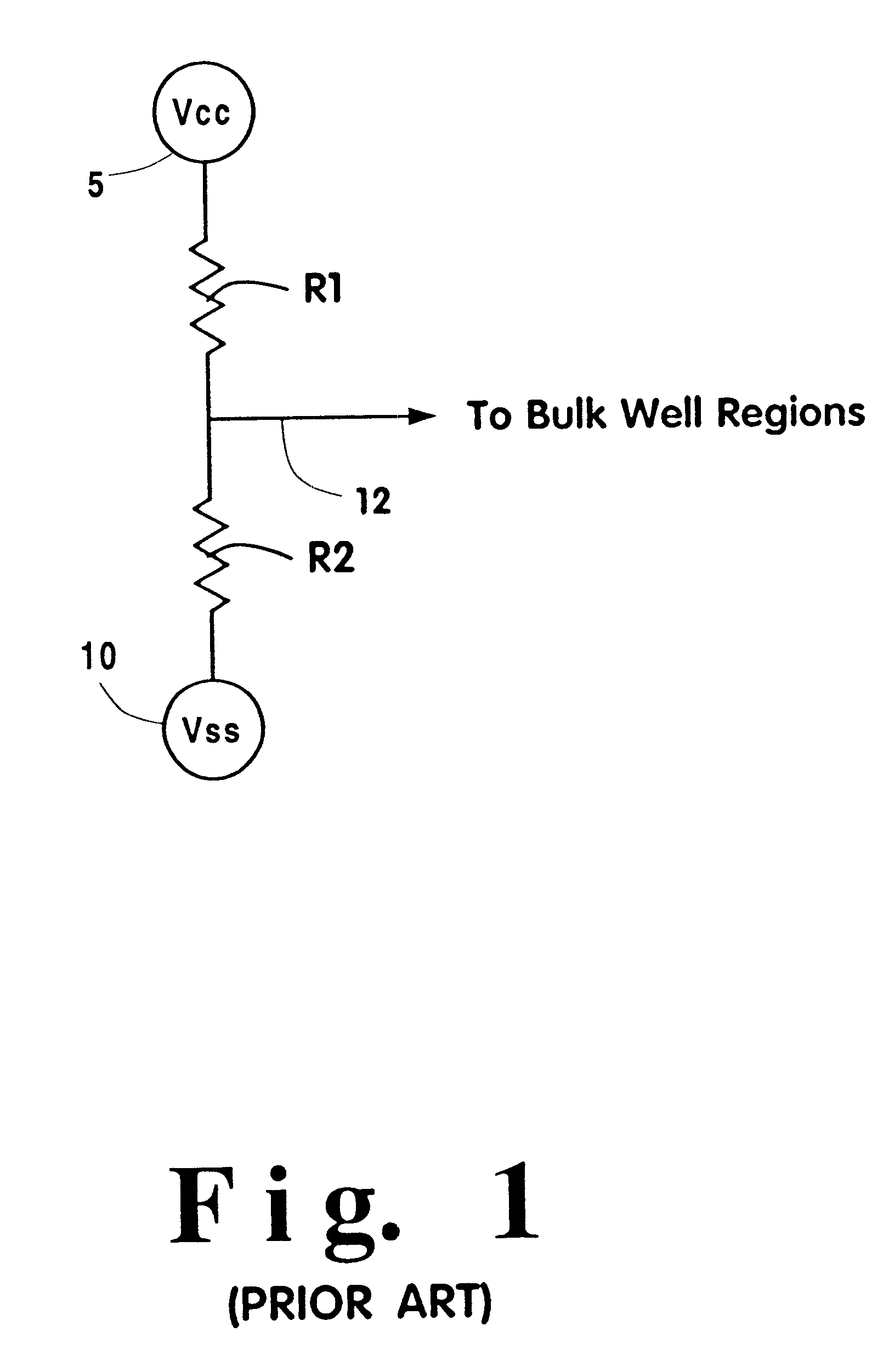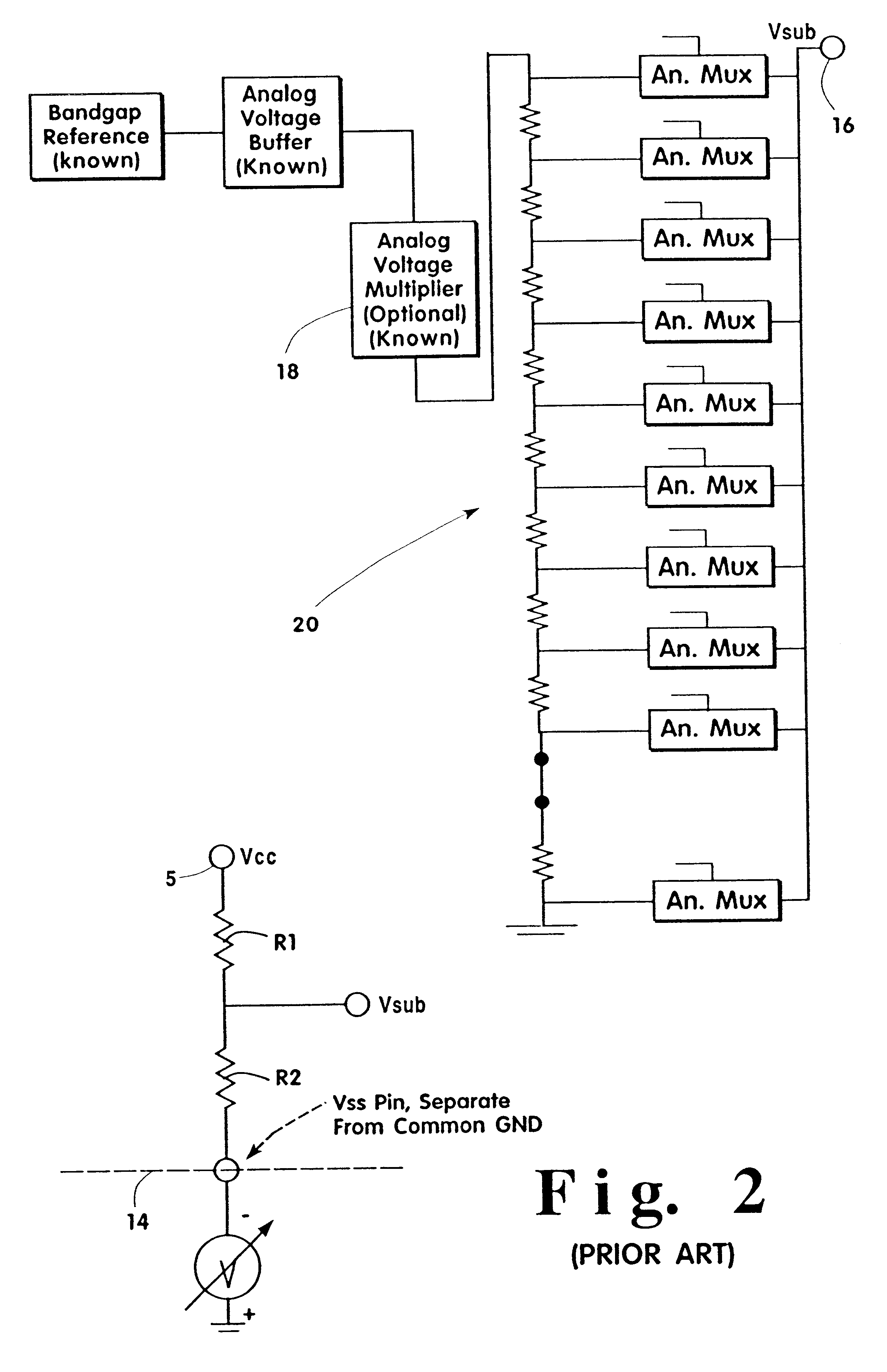System and method for AC performance tuning by thereshold voltage shifting in tubbed semiconductor technology
a technology of voltage shifting and ac performance, applied in the field of integrated circuit chips, can solve the problems of vt, discarded products or sorted into less-profitable speed bins, and the presence of ac defects in manufactured devices,
- Summary
- Abstract
- Description
- Claims
- Application Information
AI Technical Summary
Benefits of technology
Problems solved by technology
Method used
Image
Examples
Embodiment Construction
)
In describing the preferred embodiment of the present invention, reference will be made herein to FIGS. 1-4 of the drawings in which like numerals refer to like features of the invention. Features of the invention are not necessarily shown to scale in the drawings.
A system and method are described for separating the bulk connections for FETs on the die from the supply rails, testing the die to determine if a shift in the threshold voltage, V.sub.T, of certain devices within the die (as defined by the wells) can remove an AC defect, and tailoring the voltage or voltages applied to the bulk nodes, post-manufacture, such that the integrated circuit meets its performance targets or may be sorted to a more valuable performance level. While the present invention is useful in all FET based integrated circuits, its utility is increased with increases in the number of device wells that may be independently biased, such as in advanced CMOS processes.
In all prior art embodiments for altering ...
PUM
 Login to View More
Login to View More Abstract
Description
Claims
Application Information
 Login to View More
Login to View More - R&D
- Intellectual Property
- Life Sciences
- Materials
- Tech Scout
- Unparalleled Data Quality
- Higher Quality Content
- 60% Fewer Hallucinations
Browse by: Latest US Patents, China's latest patents, Technical Efficacy Thesaurus, Application Domain, Technology Topic, Popular Technical Reports.
© 2025 PatSnap. All rights reserved.Legal|Privacy policy|Modern Slavery Act Transparency Statement|Sitemap|About US| Contact US: help@patsnap.com



